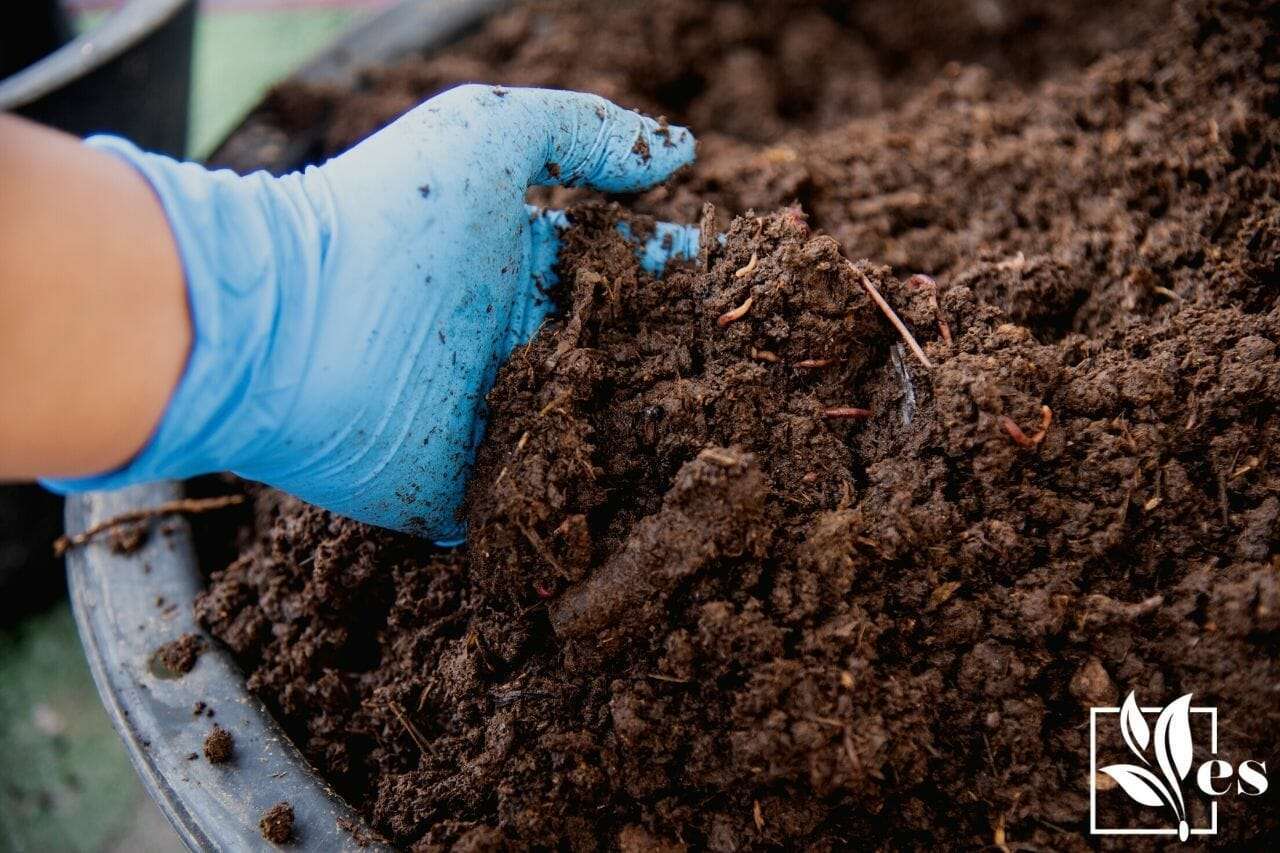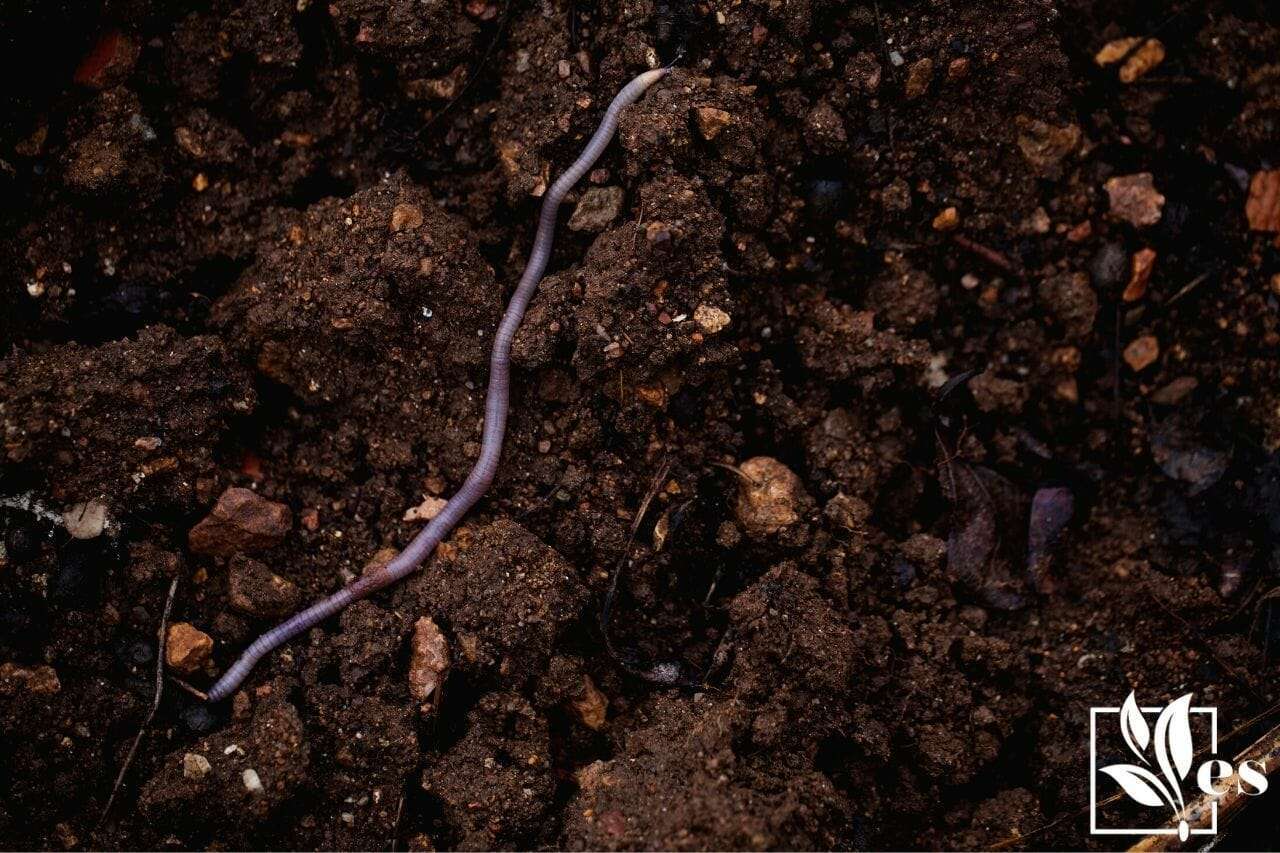White worm in plant soil is a usual occurrence unless their number becomes too large. At what point can you distinguish that these worms have become a problem? This is what this complete guide is all about.
 Today, we will discuss the various types of such worms, why they increase, and how to stop their infestation.
Today, we will discuss the various types of such worms, why they increase, and how to stop their infestation.
JUMP TO TOPIC
What Are the Types of White Worm in Plant Soil?
The small or large white worms in the soil, called enchytraeidae in Latin, are mostly pot worms, nematodes, gnats, or grubs. Some of them are part of the natural ecosystem of the soil. Others may appear in the soil of your potted plants due to overwatering or after a recent soil change. We will not cover here anything about white ants or white bugs in the soil, only about white worms.
Read on as we discuss these major types of worms in detail below.
– Pot Worms
These tiny white worms in houseplant soil are present naturally in small amounts. They are whitish-translucent, round, and slightly bigger than earthworms. They feed on the organic matter within the potting mix. In small numbers, they are even beneficial as they turn the compost and provide aeration.
However, under certain conducive conditions, they multiply at an alarming rate. Not only will they eat up all your organic matter, but they are also not healthy for certain beneficial worms in the soil like the red wigglers or Eisenia fetida.
– Nematodes
Nematodes are white roundworms and are commonly present in potting soil. Some of them are so small that they cannot be seen with the naked eye. Others are big enough to be detected at least.
Some beneficial nematodes burrow into the soil and improve air circulation and drainage. They are also important for making compost through a process called vermicomposting. There are also parasitic nematodes, and an increase in their number has been known to harm the plant.
– Fungus Gnats
These can be considered among types of worms in potted plants even though they are not, technically, worms. This is because a fungus gnat larvae look just like a worm.
You can identify these white larvae due to their black-colored head. Gnats are pests through and through. They feed off your plant until they become a fly, with your precious plant destroyed in the process.
– Grub Worms
Again, these are not real worms like nematodes or pot worms. They simply represent the larval stage of several beetle species in the soil. These larvae also feed off the plant and weaken it over time.
Why Do These White Worms Appear in the Soil?
The primary reason behind the rapid growth of worms in the soil includes too much watering, a change in the soil’s pH, or soil with too much organic matter and humidity.
You can read about all these causes ahead.
– Too Much Watering
One major cause of white worms in soil is when you water your potted plant a lot or have placed it outside where it receives a lot of rain. Too much water strips the nutrients away from the soil. Excessive soil moisture also encourages the growth of all sorts of organisms in the soil.
These organisms then turn towards feeding off the plant and its sap. This way, even the most beneficial bugs turn harmful to the soil and the plant.
– Change in the Soil’s pH
The pH of the soil plays a very important role in the plant’s overall health. Most plants grow well when their soil’s pH range falls from acidic to neutral. On the other hand, alkaline pH promotes the growth of all sorts of worms and other pests. It also weakens the plants and decreases their resistance against them.
Many natural substances that might be included in your soil feed might cause this pH change. The most common examples we can give are bone meal and clamshells.
– Too Much Organic Matter
Too much organic matter in the soil acts as food for pests and worms. It is normal for gardeners to add organic substances like compost and mulch to the soil. However, there is still a limit to how much you can add.
The worms break down this compost and feed off the nutrients released. The more the organic content, the more food there is for the worms, and the more their numbers increase.
Organic content in the form of mulch also acts as the hiding spots for worms like cutworms to lay their eggs undetected. These eggs then hatch safely in mulch’s moist and decaying organic environment.
– Too Much Humidity
Humidity is one of the most potent contributing factors to worm proliferation. These worms, along with gnats and grubs, lay down hundred of eggs.
A moist and highly humid environment is essential for the survival and hatching of these eggs. If your soil and the surrounding air are too moist, you will face an abundance of worms.
How To Get Rid of Them
To get rid of these worms from your soil, you can remove the topsoil or replace the soil altogether. Biological methods of pest control are effective as well. Another option is to use natural or artificial insecticides to kill these worms.
Read all the details below.
– Wash Your Soil
The first thing that must be done is to wash the soil so that a major bunk of these worms gets washed out. It is best to use filtered or distilled water in copious amounts.
After washing your plant for about five or ten minutes, place the pot somewhere under bright light. This is so that the soil will dry out faster and will not be at risk of any fungal infections.
– Remove the Top Layer
The top layers of the soil are heavily filled with the larvae of pests like gnats and grubs. It is best to get rid of this layer using a rake. Put this layer in a bag and dispose of it properly; do not reuse this soil.
Some people prefer to replace the whole soil altogether. If you feel like your soil has a particularly heavy worm infestation and you don’t have too much time to deal with it, this option is for you too.
Simply moisten the soil so that it becomes soft. Then, using a rake, remove the soil layer by layer and lift out the plant. Make sure that the new soil you use is sterilized properly.
– Try Biological Control
Biological control introduces other organisms into the soil to eat up the ones currently bothering you. For gnats, you can introduce certain nematodes and bacteria into the soil.
The bacterium Bacillus thuringiensis is particularly effective against gnats and grubs in their larval stage. For pot worms, you can introduce certain non-parasitic nematodes and mites to the soil. This is one of the most healthy, ecologically-friendly and easiest methods of worm control in our soil.
– Insecticides
The markets are filled with a plethora of insecticides and nematocides that are all equally effective. Take care to buy only that type of insecticide suitable for your plant type. If the plant in question is kept indoors, then an insecticide meant for indoor plants must be bought.
Most commercial insecticides are great at killing any insect they are manufactured to kill. It would be best to be very careful about following the instructions on the label. Make sure to protect yourself too by taking protective measures.
Neem oil is a natural insecticide and fungicide. It is not effective against nematodes but works against grubs, gnats, and other tiny worms.
– Maintain Adequate Moisture and Humidity
You also need to ensure that the humidity around your potted plants and the moisture in the soil remain within the normal range.













